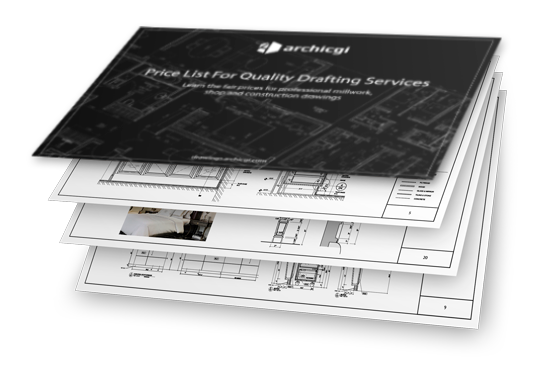In 2019, the market of 3D printing was reportedly valued at $13.7B and is anticipated to reach $63.46B by 2025. There’s no doubt – the technology has changed the world. The making of architecture is a part of the wave of domains being reshaped by it. A lot of companies have ameliorated the speed of design iterations and quality of presentation detail.
A lot of architects use 3D printing software to speed up the design process and the launch of the project. At present, Autodesk Revit is one of the most used software to plan, design, build, and control constructions and infrastructure. There are hundreds of ways how Revit BIM services and 3D printing benefits everyone involved in the process. But here are 5 most pivotal ones.
#1. Unbeatable Cost-Efficiency
Traditional model building methods take a lot of time and are labor-intensive. With Revit 3D printing, architects can reduce costs of construction significantly, freeing up funds to craft plenty of iterations. Thus, last year the Wall Street Journal wrote about the real estate developing company that managed to print a house in days saving 30% on construction costs.
In fact, 3D printing is able potentially to decrease the overall cost of construction by as much as 60%, as reported by the International Construction Cost Survey. Last year, a construction firm from Dubai built the 2500 square foot object in 17 days by involving 18 employees. The estimated labor cost savings constituted 50%.
#2. Speed Advantage
In the industry where construction deadlines are king, Revit 3D printing has no equal. It gives new opportunities to hasten delivery and reduce risk. First, at the stage of a concept model, it helps architects and clients envision the idea quickly, which is impossible with a handmade one. So, Revit allows a few specialists to work on the same model at a time, which accelerates the delivery term. Herewith, architects can choose from a huge database of different materials and colors.
Next, Revit 3D models can be sent quickly from Revit to be 3D printed because both are based on the same additive geometry as their starting point. In simple words, a model is simply a matter of export-import rather than a novel project. Also, there are ways to connect to 3D printing services online to get access to other materials and a quick delivery timeline without hiring new employees or purchase more machines. At the stage of construction, no union action is necessary, errors and safety risks are reduced to zero.
Want to know more about CAD services our studio provides? Check out this archive with projects examples and learn more.
#3. Infinite Design Opportunities
Revit 3D printing allows architects to offer customized designs and exclusive pieces. For example, it is absolutely possible to produce ceramic tiles for building facades. With this technology, they can model and produce a unique piece in order to get a mold and recreate it with another material. Moreover, they can even provide this piece to a factory to produce a bigger quantity of it applying other techniques, such as concrete casting.
Or, architects in partnership with designers can tackle effectively interior design projects with 3D printing from Revit. They can create interior elements like furniture, lamps, decor, outdoor sculptures, etc. Then, the sketches can be 3D modeled and printed to be used as end products and complement interior designs.
#4. Abundance of Material and Texture
A diversity of Revit 3D printing materials means that whatever architects want to print, they have the flexibility to create it in the first place. There’s always a material that works for them. They might need something that can address finer details, such as an intricate facade, or one that allows applying other model-making techniques.
For example, layering various textures of basic materials can lend some elegance. Meantime, finishes compatible with a 3D printer, such as wood, nylon, metal or plastic, can intensify the whole aesthetic or highlight how the objects fit into a broader content.
#5. Power of Presentation that Sells
Revit 3D printing allows selling the idea of what’s going to be built prior to the construction. It adds to compound geometric systems and parametric design being exposed in ways that have been impossible before. Autodesk Revit 3D printing empowers to create miniature layouts that translate the most ambitious visions to clients. Thus, printed 3D models represent miniature layouts of one building or the whole complex with the area around.
As a result, they are able to produce a powerful and deliberate impact on the clients during the presentation. Architecture firms that use 3D printing will be able to incorporate better visuals into presentations and scale up the business drastically.
Revit 3D printing has proved to be a disruptive technology in the construction industry. It is cost-efficient, has unlimited material and interior design potential, and helps market the ideas. Moreover, it accelerates delivery times drastically, which is critical for the construction process.
Wonder how much high-quality drafting services cost? Check out the examples of our real projects with pricing.
Want to partner up with a professional studio to get CAD services? Let us take care of your architectural project and provide you with top-notch, high-quality BIM solutions.





